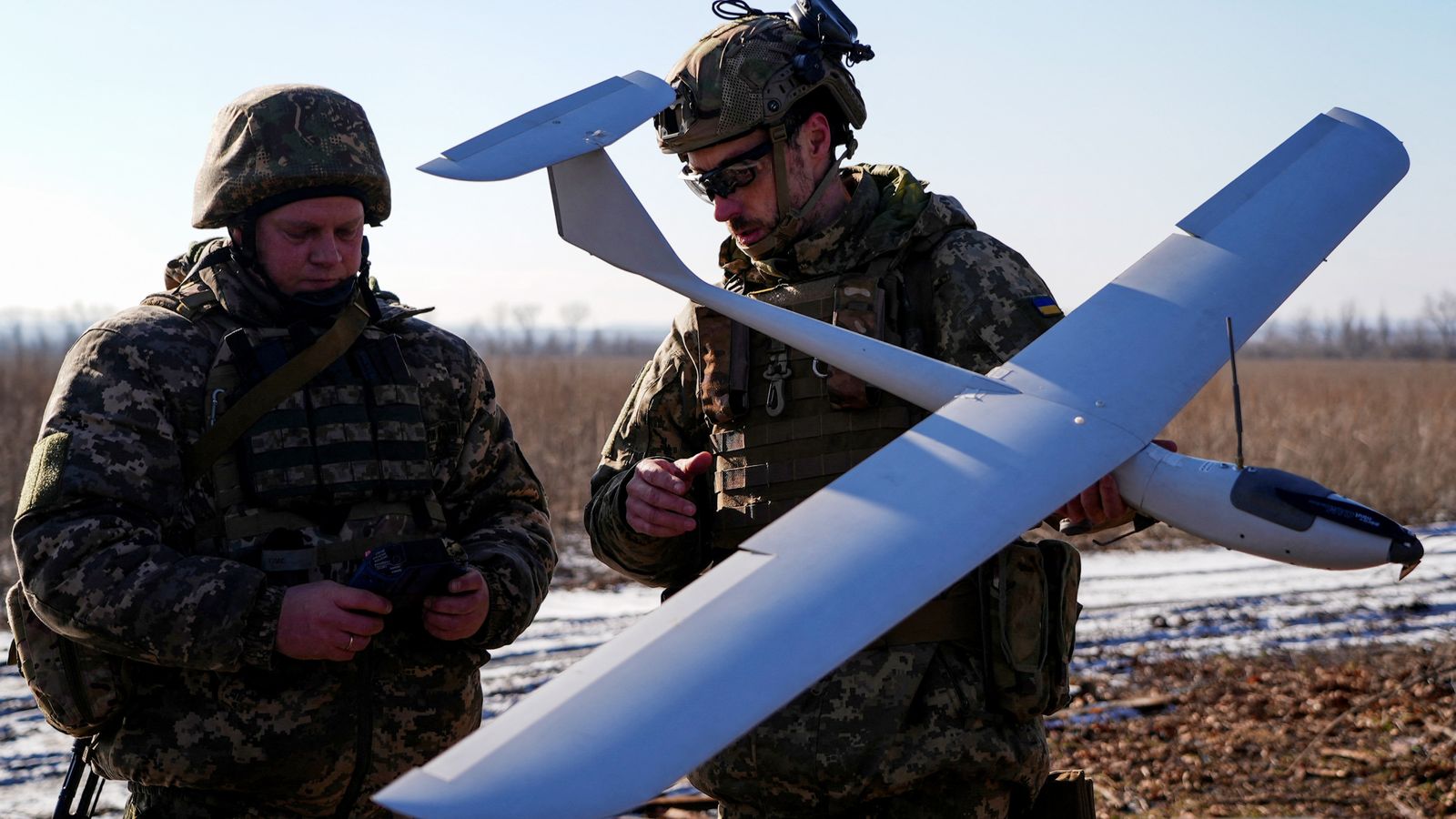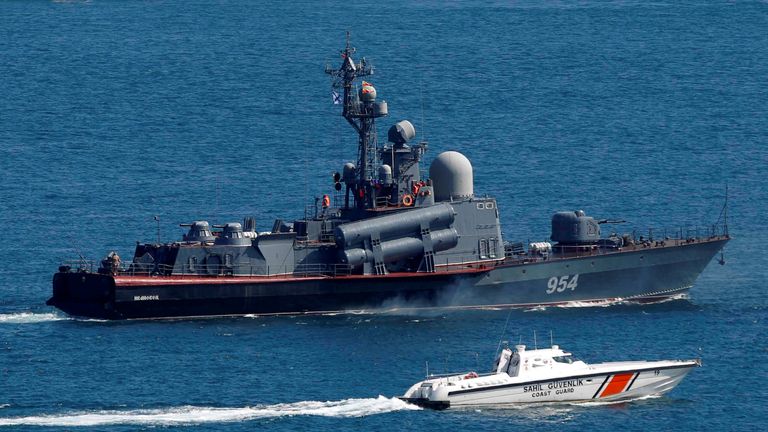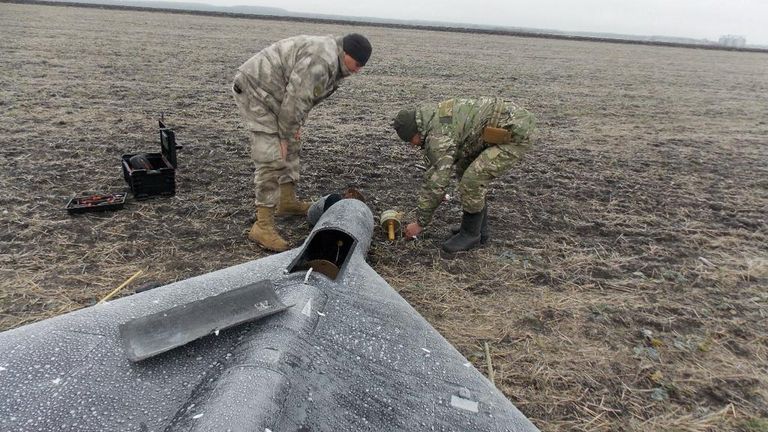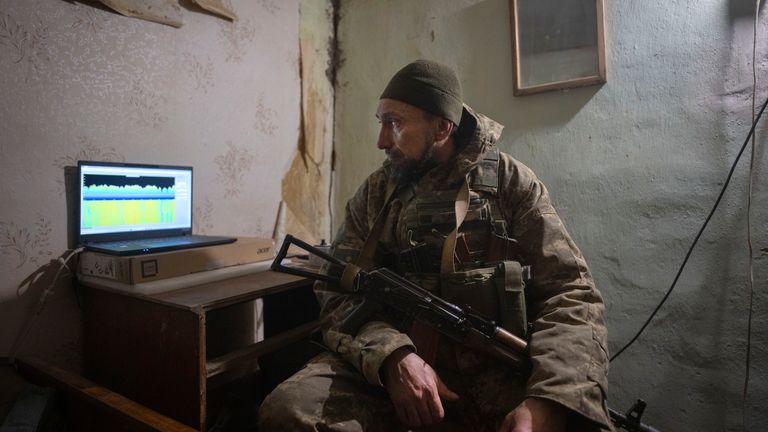Since Russia’s illegal invasion of Ukraine there has been a revolution in the role of military UAVs (unmanned air vehicles), which have enabled much smaller forces to prevail against the traditionally dominant military powers.
Has drone warfare become the dominant military capability for the underdog?
The first flight of a powered UAV was on 6 May 1896, several years before the Wright brothers’ first manned powered flight on 17 December 1903. However, both commercial and military exploitation of aviation potential focused on the manned option, limiting investment in UAVs.
But, the prolonged war in Afghanistan saw a surge of investment in long-range UAVs such as Predator and Reaper as developments in satellite technology led to the weight (and cost) of sensors falling dramatically. More recent conflicts have continued that theme.
Follow latest: Dramatic footage shows huge explosions ‘sinking Russian ship in Black Sea’
Earlier this week the Ukrainians claimed to have sunk another Russian Black Sea Fleet (BSF) ship – an Ivanovets missile boat – off the coast of Crimea. Video footage released suggests that this was a coordinated attack at night, using several maritime armed drones, that inflicted a series of deadly strikes on the Russian vessel.
Despite no longer having an established navy, Ukraine has used maritime drones to devastating effect, destroying around 20% of Russia’s BSF.
The Houthis have fired conventional anti-ship cruise and ballistic missiles against maritime and military vessels in the Red Sea; however, these missiles are expensive and are relatively easy to track and destroy.
But the Houthis have also sought to disrupt shipping in the Red Sea using armed drones. Shahed 136 drones supplied by Iran (similar to those sold to Russia to use against Ukrainian targets) and Samad drones (modified Iranian-supplied) have enabled the Houthis to continue their disruption of global shipping. Despite intense US and UK military retaliation, the drones are easy to hide, simple to operate, and easy to replace.
Read more from Sky News:
New attack drone developed by Iran for Russia’s war in Ukraine
Drones to be trialled by police as first responders to emergencies
‘Several killed’ as US airstrikes hit 85 targets in Iraq and Syria
Drones provide Ukraine with asymmetric advantage
Although Ukraine lacks the military might of Russia, Ukrainian forces have proven very adept at using, modifying and evolving armed UAVs to provide battlefield reconnaissance and attack options, such as Russian logistics hubs and fuel storage facilities.
Drones have provided Ukraine with an asymmetric advantage against a conventionally superior force.
And, on 28 January an armed drone managed to circumvent US military defences at a base in northern Jordan – Tower 22 – killing three and injuring 34 US service personnel.
Explainer: What we know about the sites targeted in US strikes on Iraq and Syria
It is not entirely clear how the drone managed to penetrate US defences, since there are a complex blend of procedural (lane/height/speed/time) and electronic (Identification Friend or Foe, etc) measures used to protect against such attacks.
But the attack was successful, and the resulting deaths have significantly heightened tensions in the region, and even led to suggestions from former president Donald Trump that we are on the “brink of World War Three”.
Drones offer increasingly effective precision strike capability
Drones are also being used to fly contraband into prisons, disrupt airports, and test military defences. They are widely available, easy to control (even from a mobile phone), and their impact and potential will not be lost on our potential adversaries, whether state or terrorist.
Military power was once defined by conventional fighters, ships and tanks, and was the exclusive domain of the major international powers.
Analysis: US strikes may have unintended and far-reaching consequences
Click to subscribe to Ukraine War Diaries wherever you get your podcasts
However, the latest generation of drones is fast becoming the weapon of choice for the military “underdog” and for terrorist organisations. They are cheap, capable, easily (and swiftly) adapted, and offer a small-scale surgical strike capability – on a budget.
The tactical impact of small drones might be limited by the small payload that the cheaper UAVs can carry, but they offer an increasingly effective precision strike capability – with demonstrable strategic impact.
The balance of military power is shifting – the West had better prepare accordingly.
This story originally appeared on Skynews




